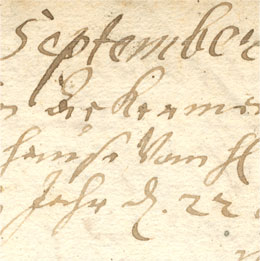What is known of Christian Ackermann’s works on the Türi Church retable?
The Türi Church retable was completed through cooperation between Ackermann and a cabinetmaker and painter who assisted him. The statues of Moses and St. John the Baptist, which symbolise the union of the Old and New Testaments, and the union between the law and the Gospel, and the statues of angels that refer to God and the Kingdom of Heaven originate from the time of its completion. Two sculptures of virtues and the figure of Christ the Invincible were previously part of the retable.
What happened to the Türi Church retable after Ackermann?
The retable has been repeatedly redesigned. Pictures by August Georg Wilhelm Pezold on the same themes were mounted on top of the baroque altar paintings The Last Supper and Calvary in 1856. That is also presumably when the retable was given a Gothic-style cornice and the locations of its figures were altered. Since the wish was to place a gilded cross at the retable’s pinnacle, the statue of Christ the Invincible, which had previously stood in that spot, was evidently left over (or had become broken). It was set aside somewhere and was later lost. The angels that were originally beside Christ were evidently moved to their current spots at that same time. The pairs of columns that support the retable’s floor probably date from that same time. It was then that the retable was coated with grey tone(s).
In 1923, the greater portion of the retable was painted pale blue, its columns and statues were painted snow white, and (part of) its ornamentation was gilded. The retable’s dark brown overall colouring, the dark blue colour of its columns, and the ochre yellow colour of its statues originate from 1930.
Pezold’s painting Calvary was stolen from the retable in 1990. As a result of this, the original painting that had been hidden for more than 130 years was exposed. Inspired by this turn of events, Pezold’s painting The Last Supper was also removed from the retable. In this way, Türi’s old retable at least partially regained its baroque colouring.
